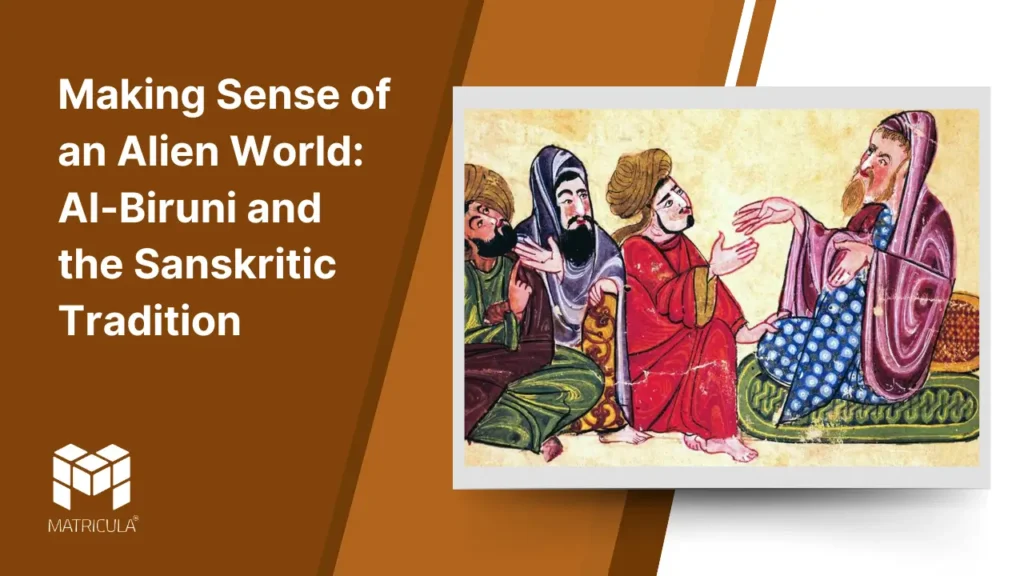In the annals of history, few individuals have demonstrated the intellectual curiosity and openness to other cultures as vividly as Al-Biruni. A Persian polymath born in 973 CE, Al-Biruni is celebrated for his pioneering contributions to fields such as astronomy, mathematics, geography, and anthropology. Among his most remarkable achievements is his systematic study of India, captured in his seminal work, Kitab al-Hind (The Book of India). This text is a testament to Al-Biruni’s efforts to make sense of a culture and tradition vastly different from his own—what he referred to as the “Sanskritic tradition.”
Encountering an “Alien World”
Al-Biruni’s journey to India was a consequence of the conquests of Mahmud of Ghazni, whose campaigns brought the scholar into contact with the Indian subcontinent. Rather than viewing India solely through the lens of conquest, Al-Biruni sought to understand its intellectual and cultural heritage. His approach was one of immersion: he studied Sanskrit, the classical language of Indian scholarship, and engaged deeply with Indian texts and traditions.
This effort marked Al-Biruni as a unique figure in the cross-cultural exchanges of his time. Where others may have dismissed or misunderstood India’s complex systems of thought, he sought to comprehend them on their own terms, recognizing the intrinsic value of Indian philosophy, science, and spirituality.
Decoding the Sanskritic Tradition
The Sanskritic tradition, encompassing India’s rich repository of texts in philosophy, religion, astronomy, and mathematics, was largely inaccessible to outsiders due to its linguistic and cultural complexity. Al-Biruni overcame these barriers by studying key Sanskrit texts like the Brahmasphutasiddhanta of Brahmagupta, a seminal work on astronomy and mathematics.
In Kitab al-Hind, Al-Biruni systematically analyzed Indian cosmology, religious practices, and societal norms. He compared Indian astronomy with the Ptolemaic system prevalent in the Islamic world, highlighting areas of convergence and divergence. He also explored the philosophical underpinnings of Indian religions such as Hinduism, Buddhism, and Jainism, offering detailed accounts of their doctrines, rituals, and scriptures.
What set Al-Biruni apart was his objectivity. Unlike many medieval accounts, his descriptions avoided denigration or stereotyping. He acknowledged the strengths and weaknesses of Indian thought without imposing his own cultural biases, striving for an intellectual honesty that remains a model for cross-cultural understanding.
Bridging Cultures Through Scholarship
Al-Biruni’s work was not merely an intellectual exercise but a bridge between civilizations. By translating and explaining Indian ideas in terms familiar to Islamic scholars, he facilitated a dialogue between two great intellectual traditions. His observations introduced the Islamic world to Indian advances in mathematics, including concepts of zero and decimal notation, which would later influence global scientific progress.
Moreover, his nuanced portrayal of Indian culture countered the simplistic narratives of foreign conquest, offering a more empathetic and respectful view of a complex society.
Legacy and Relevance
Al-Biruni’s approach to the Sanskritic tradition underscores the timeless value of intellectual curiosity, humility, and cultural exchange. His work demonstrates that understanding an “alien world” requires not just knowledge but also respect for its inherent logic and values. In a world increasingly defined by globalization, his legacy offers a compelling blueprint for navigating cultural diversity with insight and empathy.
Al-Biruni remains a shining example of how scholarship can transcend the boundaries of language, religion, and geography, enriching humanity’s collective understanding of itself.




